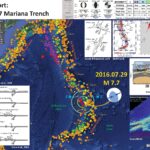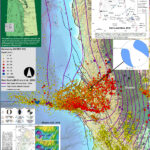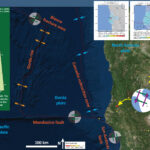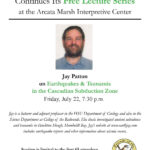Earlier this year, there was an intermediate depth earthquake along the Mariana Trench with a magnitude of M 7.7. I was traveling and did not have the opportunity to prepare a report at the time. While getting together my annual…
Earthquake Report: Bayside (northern California): Update #1
So, I put together another map with today’s earthquake in context with the historic seismicity and some other factors. Now the USGS magnitude is M = 4.7 and there is a moment tensor for this earthquake (that looks very similar…
Earthquake Report: Bayside (northern California)
Well, after installing a stilling basin for our new tide gage installation at Trinidad, CA, I was napping in my upstairs bedroom in Manila, CA. I was awakened by a short (2-3 second) short shaking earthquake. Turns out it was…
Friends of the Arcata Marsh 2016.07.22
I present material about the Cascadia subduction zone for the Friends of the Arcata Marsh (FOAM) held on 7/22/16 at the Arcata Marsh Interpretive Center. This page has some supporting material from this presentation, including the digital presentation file. The…




